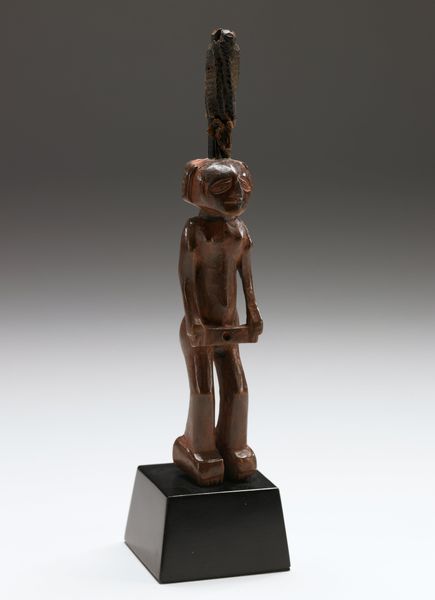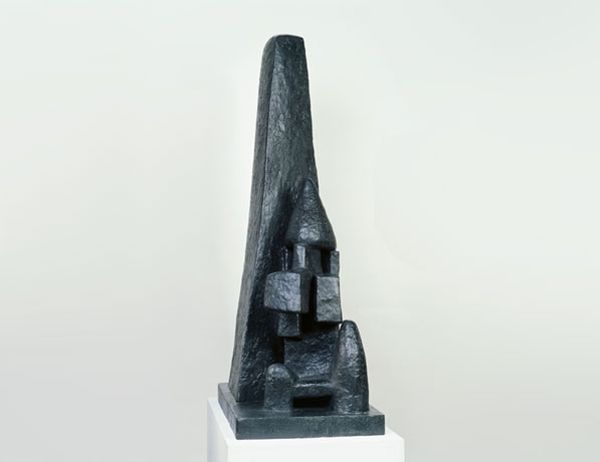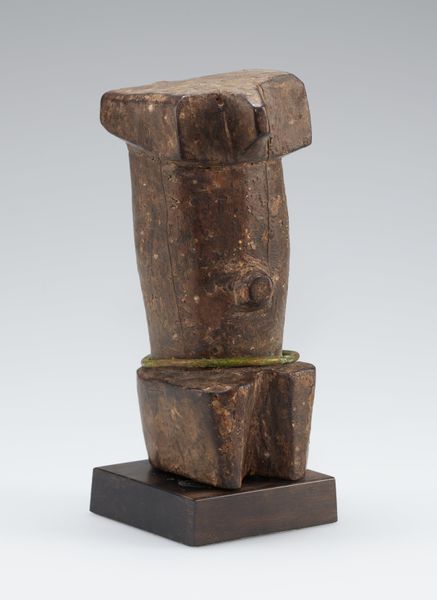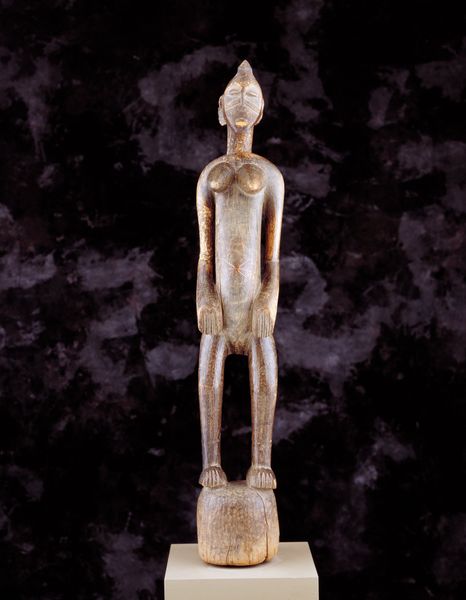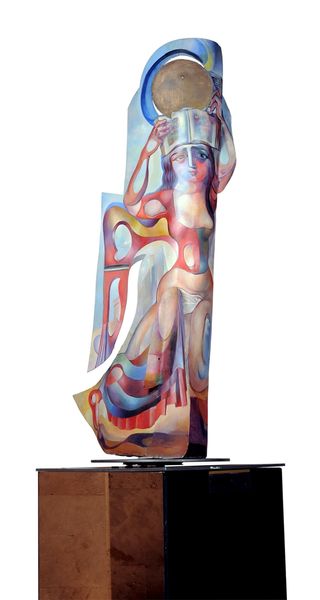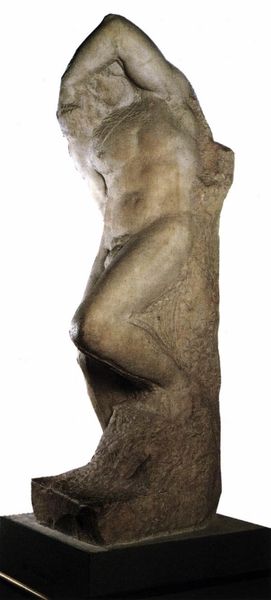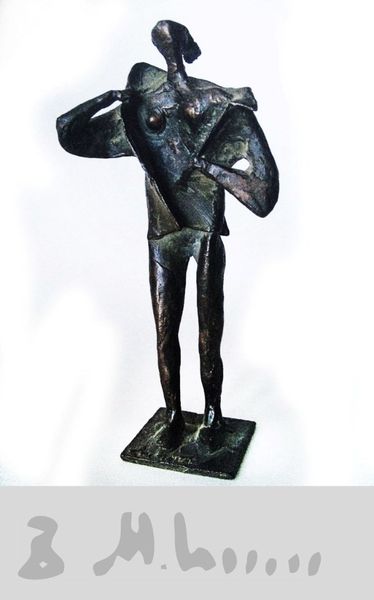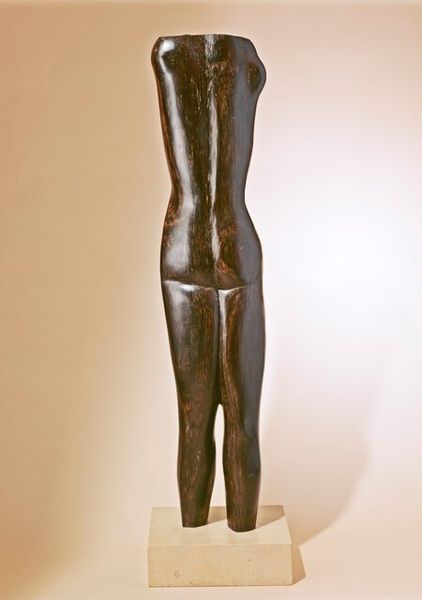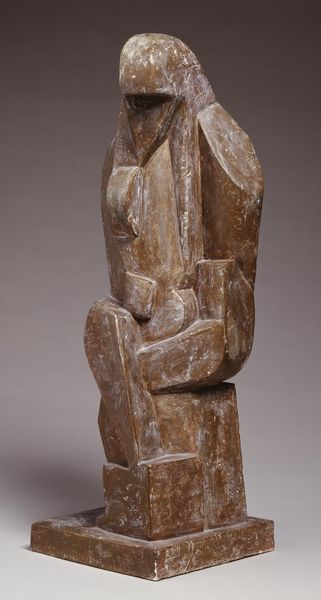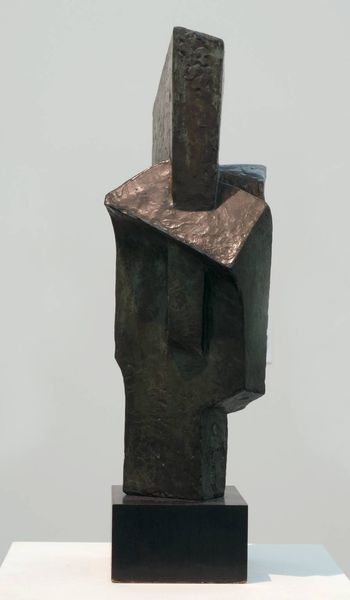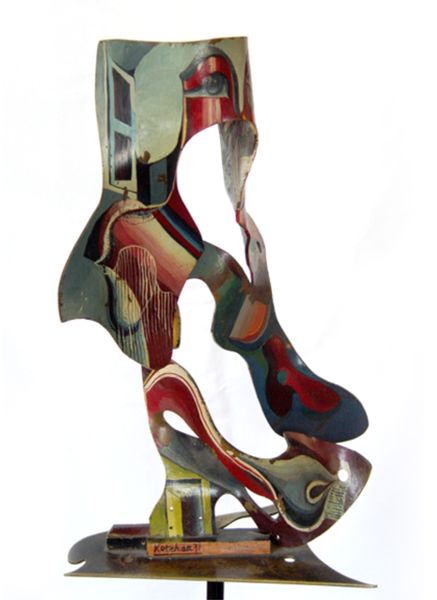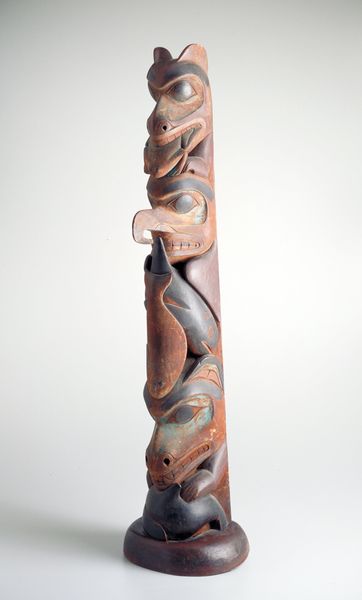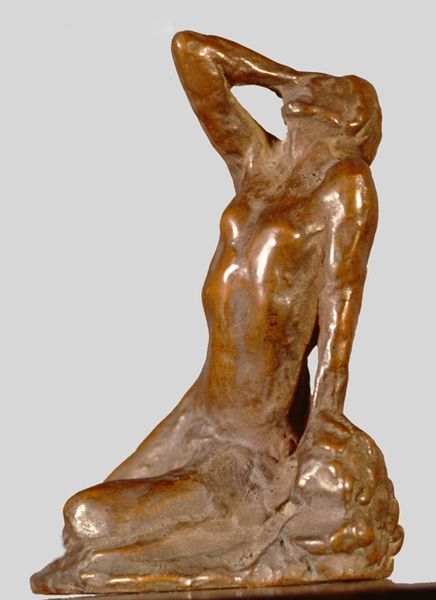
sculpture, wood
#
portrait
#
cubism
#
sculpture
#
figuration
#
sculpture
#
abstraction
#
wood
Copyright: Yervand Kochar,Fair Use
Curator: Standing before us is "ANDROGENE," a 1928 wood sculpture by Yervand Kochar, masterfully blending portraiture with the principles of Cubism. Editor: My first impression is one of fragmented grace. The sculpture's verticality and its use of layered planes evoke a sense of depth, despite the limitations of its material. It looks a little haunting. Curator: The title is quite provocative, suggesting a blending of genders, which could reflect the shifting social landscapes of the 1920s. Kochar might be exploring themes of identity fluidity or challenging conventional gender norms of the time. The visible influence of modern philosophy, such as the works of Freud, also adds interesting context to its narrative, especially regarding notions of psycho-sexual development. Editor: Agreed, the fractured surfaces certainly mirror the inner turmoil often associated with modernist angst. However, formally speaking, it’s the interplay of light and shadow on the geometric facets that draws my attention, that and the careful application of color across the figure's surface which gives the wooden statue a near-painterly quality. It looks to be of relatively modest dimensions. Curator: The abstraction allows for diverse readings regarding power, sexuality, and social expectations. As a diasporic artist who eventually settled in Soviet Armenia, one can assume that Kochar would be engaging with these topics in interesting ways. Editor: Perhaps. I’d rather suggest we admire how each plane establishes a dialogue with its neighbour and also subtly redirects our vision. It exemplifies Kochar's ingenuity for the time. The composition, the subtle surface embellishment, and material choice speak louder than its potential societal undertones for me. Curator: Fair point. Despite our differences, one can appreciate the enduring appeal of "ANDROGENE", situated at an interesting crossroads of early modernism and what it had to say about human identity. Editor: Yes, Kochar’s exploration of form has revealed different qualities in the work. Thanks for the lively chat!
Comments
No comments
Be the first to comment and join the conversation on the ultimate creative platform.

